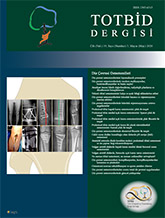
Joint preservation surgery has achieved an importance in the treatment of articular cartilage damage as a result of prolonged life expectancy and increased expectations from daily activities. With the inherent problems of prosthetic arthroplasty failure due to polyethylene osteolysis, mechanical loosening, joint infection, and problematic revision surgery secondary to ligamentous laxity or bone deficiency, reevaluation of joint preservation techniques led to the resurgence of osteotomy and cartilage repair surgeries as well as more bone-sparing partial prosthetic arthroplasties. The purpose of the knee osteotomy surgery is to correct malalignment at the site of the deformity and relieve pressure on the damaged cartilage. If osteotomy is to be used in treatment algorithms designed to help these young patients, then the technique-related problems and patient-related issues that led to disfavor with tibial osteotomy in the past must be avoided. Because joint preservation in young patients is a developing field, it is often confusing to surgeons. The purpose of this chapter is to provide a practical approach to the field of cartilage regenaration after knee osteotomies. Some surgical techniques have been explained combining previous principles of knee osteotomies and cartilage regeneration techniques.